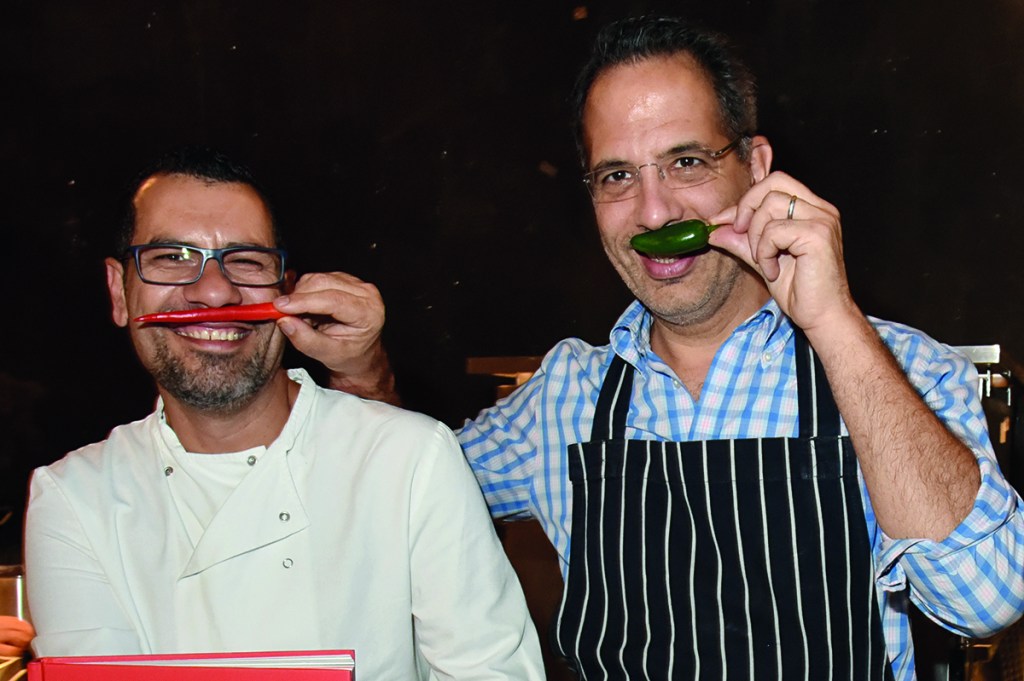This article is in The Spectator’s February 2020 US edition. Subscribe here.
Being a Zionist is a complex business, not least because, like supermarket hummus, there are so many varieties. There are settlement-hungry messianists and utopian socialists, hard-right annexationists and soppy liberals who still dream of exchanging land for peace. It’s an identity that can confuse even its devotees.
I’ve tended to belong in the last camp, but in recent years I’ve drifted from political Zionism altogether. It’s so draining, so deadlocked, so knotty and angst-ridden. I made a decision a few years ago to dial back my engagement with Israel, and life was a little lighter as a result.
But it left an absence. There’s a place in my body where 2,000 years of ancestral yearning resides. Turns out it’s my stomach. In the past five years, I have migrated into an altogether new category: the gastro-Zionist. Instead of arguing over the Golan or the Green Line, I now concentrate on falafel composition and the proper way to dice a salad. Whenever possible, I express my people’s ancient homesickness in the most Jewish way there is: I eat it. It’s pita, not Palestine, that now has my attention.
My journey into gastro-Zionism has been powered by the fact that Israeli food has become really, really good. In the past decade, Israeli restaurants have established a dominant presence in foodie hotspots across the West. In Britain it was Jewish West Jerusalemite Yotam Ottolenghi and his Palestinian East Jerusalemite business partner Sami Tamimi who started it all. Ottolenghi, the restaurant and the phenomenon, brought Levantine cuisine first to the forefront of London’s restaurant scene, and then into people’s everyday lives. We can joke about Ottolenghi and Tamimi as gastro-peace envoys, but their food is a serious business. It is mostly thanks to Ottolenghi that Britain’s baba ganoush-eating classes spent most of the 2010s fiddling with previously unheard-of spices such as ras el hanout, za’atar and sumac. Find me a middle-class kitchen in London and I’ll show you Ottolenghi’s Jerusalem cookbook sitting proudly on the east wall. In Ottolenghi’s wake have come a swathe of Anglo-Israeli joints, most notably The Palomar, Assaf Granit’s Rupert Street miracle.
In New York, Israeli joints are everywhere: Flatiron’s Nur, the West Village’s Balaboosta, the SoHo influencer magnet Jack’s Wife Freda (so beloved it now boasts three locations), the exceptional Miss Ada in Fort Greene (home to the world’s finest whipped ricotta) and many others. Shakshuka has supplanted eggs Benedict as the dish for aspirational brunchers, of which the city has many. Manhattan even has an Ethiopian-Israeli restaurant now, Tsion Café in Harlem, where firfir (shredded bread) and doro wat curry nestle on the menu alongside ful (fava bean dip) and malawach (fried flatbread).
The Philadelphia scene is dominated by Michael Solomonov, a reformed Israeli-American bad boy whose flagship Zahav is probably one of the best restaurants in America. Solomonov’s sprawling portfolio has Philadelphians drinking addictive tahini milkshakes from Goldie and devouring Jaffa-caliber hummus from Dizengoff.
And it’s not just the East Coast: there’s Ema in Chicago, Tusk in Portland and Shaya in New Orleans. Even the North Country now boasts a hot Israeli eatery: Yalla Vermont in Brattleboro, famed for its pita sandwiches. No doubt they make a refreshing change from Ben & Jerry’s.
They really get everywhere, the Israelis. Of course many different Middle Easterners have contributed to the spread of the region’s cuisine, and all deserve their due. But Israelis’ success at the high end comes from their ability to blend the business nous of Silicon Valley with the edible produce of the Jezreel Valley; it’s a powerful combination.
Israeli cuisine suits today’s fashions because it’s shareable, Instagrammable and does lots of clever things with healthy but previously unpromising vegetables like carrots and cauliflower. These restaurants have skillfully surfed our transition from the age of fine dining and tasting menus to something far more accessible and casual.
Hip cuisine has replaced haute cuisine and eating out is now more about fun than grandeur. This explains the appeal of Israeli restaurants that, much like their owners, tend to be unpretentious, attractive and loud. Israeli food is a lot like Israeli television, which is also gaining worldwide notice: stylish and punchy. Both are products of a nation whose creativity is fueled by the jagged energy of life on a geopolitical precipice.
To the Jewish state’s many critics, the rise of Israeli cooking doubtless embodies the colonialism that lies at the heart of the ‘Zionist project’. Trust the Jews to descend on a piece of neglected gastronomic real estate, strip its cuisine for parts and then use their savvy and connections to make a fortune flogging it to Americans. It’s true that hummus and the politics of cultural appropriation are serious issues in the Middle East. The Israel-Lebanon ‘hummus wars’ saw regiments of chefs patriotically competing to prepare ever-larger vats of the stuff in an attempt to capture the Guinness world record.
But there’s another story to tell, too, about a cuisine that draws strength from the diversity that is this 72-year-old country’s tragedy and its triumph. About a quarter of Israel’s population is Arab, including Bedouin and Druze. More than half of Israel’s Jews are Mizrachi, descendants of ‘eastern’ Jews from Iran, the Middle East and North Africa, who migrated, fled or were expelled from their homes after Israeli independence was declared in 1948.
This swirl of humanity has made Israeli food into the ultimate mezze platter: tagine and couscous from the Maghreb, shawarma from Ottoman Turkey and sabich (eggplant, eggs and salad in a pita) from Iraq. Jachnun (pastry) and the unpronounceable but addictive zhoug (an ultra-hot sauce) come from Yemen. Challah rolls down from the old country of Poland and Russia. Falafel is Egyptian or Israeli but, as usual, it depends on whom you ask. The yoghurt obsession is down to the Druze. Shakshuka is Tunisian. Hummus is the cement of the Levant and claimed, like the land, by both Israelis and Palestinians, among others. Fuse all this together, and you have the modern Israeli kitchen. Lots of places do these foods well, but Israeli restaurants do them all at once.
What Israel’s old-new cuisine shows us is that for all its torrid and unresolved politics, from the occupation to countering the genocidal ambitions of Iran, the country is normalizing. Its national stew is deepening and thickening. A polity that was hastily patched together with refugees and migrants from across the world, then willed into reality amid existential terror, is becoming a mature society.
Israel’s first prime minister, David Ben-Gurion, famously once said that ‘when Israel has prostitutes and thieves, we’ll be a state just like any other’. But of course Israel had prostitutes and thieves from its very first day: the way you know it’s really a state is that it now has cookbooks and a cuisine, just like any other.
The ascendancy of Israeli cooking demonstrates something important, something that has been questioned from the moment Ben-Gurion declared the existence of a Jewish national home back in 1948. It demonstrates that love it or loathe it, boycott it, worship it or just plain ignore it, Israel, that most unlikely of countries, is here to stay.
This article is in The Spectator’s February 2020 US edition. Subscribe here.


























